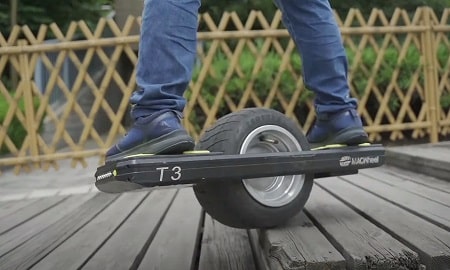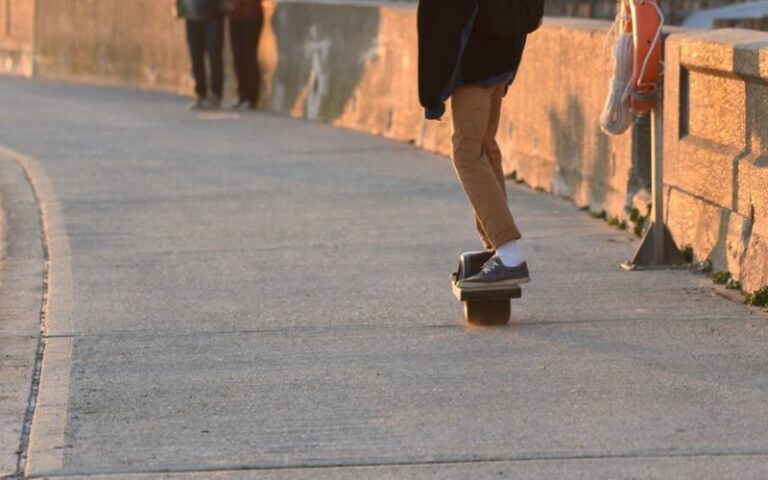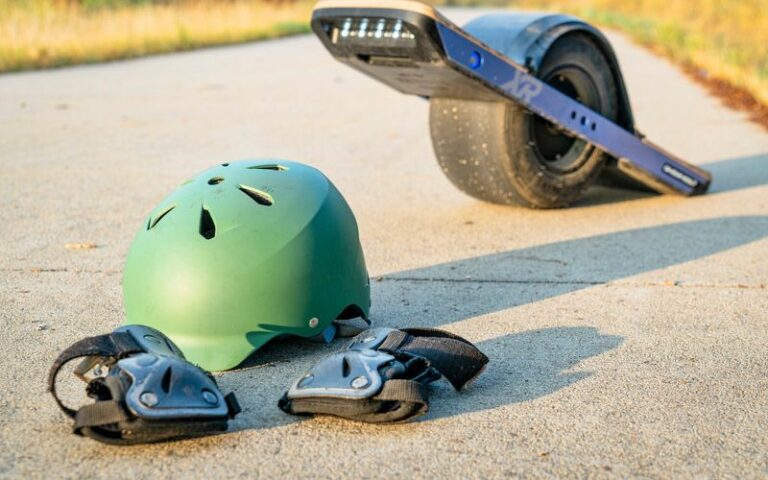Charging a Onewheel: Proper Charging and Storage For Longer Life

Whether you’re new to the world of Onewheeling or you’ve been riding for years, it’s important to keep your board in good condition. One way you can keep your board nice and healthy is to follow proper charging and storage guidelines.
The battery is the heart of your board and when it comes to charging a Onewheel you need to ensure you are doing it correctly. While the NMC batteries in your board are robust and built to last, improper charging tactics and unruly storage conditions can shorten the lifespan of your battery.
If the Onewheel battery fails that means no more carving through the streets or leisurely commutes for you. Correctly charging and storing your board may be the last thing on your mind, but in doing so could save you from potential issues in the future.
How To Correctly Charge A Onewheel

The key to your success as a Onewheel owner isn’t how fast you can go, or how many tricks you can do, but how well you look after your board. After all, you can’t be a successful rider without a functioning board.
One of the first things you can do to help prolong your battery life is to follow best charging practices. When it comes to charging a Onewheel, there are a few small things you can do which will make all the difference to the health of your battery.
Always use the official charger supplied with your Onewheel or one of the Onewheel-branded alternative battery chargers, such as the Ultracharger. Using an unapproved charger can lead to your warranty being voided.
Now you have your Onewheel and the correct charger, you are ready to start charging your board:
- Plug the charger into a power outlet first
- Connect the stock charger to the charging port on your Onewheel – this will turn the light on the charger red
- When fully charged this light will turn green and the charger will stop charging automatically
- When charged, remove the charger from the Onewheel charge port
- Finally, remove the charger from the power source
The reason we plug the charger into the wall outlet first is to avoid any voltage surges from the charger to the battery. While it may not cause any serious issues to plug in the opposite way round, the above method is the best-case scenario for overall battery health.
Can You Leave Your Onewheel Charging Overnight?
The chargers supplied with your Onewheel are smart, they automatically stop the charging process once the battery is fully charged. This means you can safely leave your Onewheel to charge overnight without the risk of overcharging.
It is advised to leave your Onewheel to charge for a prolonged period, such as overnight, to rebalance the cells in your battery. This is a vital practice for maintaining optimal battery performance.
How To Balance The Cells In A Onewheel Battery
If the cells in your Onewheel battery are unbalanced, you may notice that it takes a little while longer to charge your board. If a battery is unbalanced this means that the overall voltage in one or more of the cells has been reduced, this can also cause the battery to age more quickly than normal.

A battery becomes unbalanced when you ride your Onewheel often, but only allow it to charge for a short time before riding again. If you short-charge often and don’t allow the battery to fully recharge before riding, then you should regularly rebalance your Onewheel battery.
When charging a Onewheel, leaving the board plugged in for up to 24 hours allows the battery to balance itself. Future Motion, the makers of the Onewheel, state if you short charge and ride often then you should leave your board plugged in to rebalance once a week.
If you are an average rider who goes on a few rides a week and allows the board to fully recharge (to at least 90%), then you can probably get away with only needing to balance the battery pack once a month.
Do not leave your Onewheel plugged in for more than 24 hours as this is more than enough time to balance the battery. You should also always rebalance your Onewheel before riding if it has been in storage.
Please note you should avoid riding downhill on a full charge due to the Onewheel regenerative braking system. While it is important to allow your battery to balance, riding downhill on a full charge can cause damage to your battery. We will cover this in more detail later in the article.
Also, if you have replaced your battery with an upgraded model you will need to check what type of charger you can use and if it is safe to leave it charging for a prolonged period. It may not be advisable to leave your battery charging for 24 hours if you are using an aftermarket battery.
Charging Time For Different Onewheel Models
One factor which may affect what Onewheel model to buy is how long it takes to recharge the battery. We know that short charges are not ideal for optimal battery health, so to avoid having to often rebalance the battery pack, how long does it take to fully recharge a Onewheel?
Pint: 120-minute charging time or 50 minutes with the Ultracharger
Pint X: 225-minute charging time or 110 minutes with the Ultracharger
GT: 200-minute charging time or 90 minutes with the Ultracharger
+XR: 100-minute charging time or 60 minutes with the Ultracharger
Onewheel+: 30-minute charging time
You may have some concerns about fast charging using the Ultracharger and if it is damaging to the battery. As it does charge much quicker this means it uses a stronger current, but only until the battery is charged to a certain percentage.
The Ultracharger charges quickly up until around 70% full, then it reduces the output until the battery is fully charged. This means that your Onewheel battery is not receiving the full amp amount for the entire charge time, meaning it isn’t causing any adverse damage to your battery.
Is There A Onewheel Car Charger?

There is nothing more annoying than your Onewheel battery running low when you’re far from home. Luckily, there is a car charger that you can purchase which could help in this situation.
The car charger is an official charging accessory that plugs into your car (a 10A cigarette lighter is needed), so you can charge your Onewheel on the go.
A standard power outlet in the US ranges around 15-20A, meaning the 10A lighter in which you plug the car charger will provide less overall charging power. It will take longer to fully charge a onewheel with one of these chargers, but for emergencies when the main charger is not an option the extra charger is a great accessory to own.
Best Practices For Charging A Onewheel
Allowing your Onewheel battery to completely drain before charging could cause some damage to the battery cells. While the battery management system within your Onewheel battery should prevent any significant damage, you should do your best to not allow the battery to fully run out before recharging.
It can also be dangerous for you as a rider to allow your battery to drain while riding. This would initiate a low battery pushback, which can be quite aggressive, and your board can also power off if the battery is low. This could cause a possible nosedive accident, which can be very serious.
Earlier in the article, we discussed balancing the battery cells and how allowing your board to charge fully is important for the battery’s health. While this is true, you must be careful when charging your battery fully if you live uphill or will be riding on a decline at the start of your ride.
Onewheel boards feature regenerative braking, which means the battery recharges itself as you ride downhill. If your board is fully charged and you ride on a decline your battery can automatically overcharge itself.
This is dangerous for two reasons:
- Your Onewheel could stop mid-ride to try and prevent the battery from overcharging, which will send you flying forwards and cause a possible injury
- The battery could overcharge and cause significant damage to the cells
You are best carrying your Onewheel or only charging to 90% if you often start your ride from a higher elevation and the beginning of your trip is downhill. The Onewheel GT comes with a handy feature where you can limit the total charge to 90% using the app. This then eradicates the worry of possibly overcharging your battery.
You should avoid extreme heat or cold when it comes to charging a Onewheel. If you have been out for a ride and the temperature was not ideal, you must let your battery come to room temperature before charging, and riding again, to avoid damaging the battery.
Extremely cold temperatures cause a decrease in the transfer velocity and overall capacity within the battery, meaning the battery will need to work overtime as it is difficult for it to charge when cold.
Alternatively, high heat can cause the battery to degrade much quicker and can cause oxidation of the electrolytes within the battery which reduces the overall capacity.
Simply speaking, adverse temperatures can cause irreversible damage to a battery. This is also something you need to be aware of if you will be putting your Onewheel board into storage.
Best Onewheel Storage Practices
Following on from the above, whether you are putting your board into long or short-term storage, if you aren’t going to ride your Onewheel for more than 2 weeks you must consider the storage conditions.
You should store it somewhere where the temperature can either be regulated or is not susceptible to extreme highs or lows. A temperature of around 50-60 degrees F is ideal for the overall health of your Onewheel, and its battery.

Moisture is a common enemy of any electronic device, and a Onewheel is no different. As well as avoiding water while riding, you should also avoid it when in storage. A nice, dry area is perfect for storing your board as prolonged exposure to a large amount of humidity (or any other form of water) can cause internal issues.
When putting your Onewheel into storage, you must consider the battery percentage. A charge of around 40-50% is ideal for both short and long-term storage. Another way to tell your Onewheels charge, or if you have replaced the battery and want an accurate battery reading, is by measuring the voltage.
When charged, the usual voltage per cell for an NMC Lithium battery ranges from 3.6-3.7v and 4.1-4.3v (maximum, full charge). You wouldn’t want to store your Onewheel any less than 3.4v per cell, which equates to around 40% charge.
To calculate the total voltage for your reading, you would do the following sum:
individual cell voltage x number of cells = total voltage of the battery charge
Take the Onewheel Pint, for example, the Pint model has 15 cells in its NMC battery. For ideal storage conditions, we want the voltage to be around 40% which calculates as:
3.4v x 15 cells = 51v
While your Onewheel is in storage, you should check it each month to ensure the battery doesn’t dip below 40-50%. You also need to plug your board into charge once every two months to keep the battery healthy or risk voiding your warranty.
You can also purchase additional accessories which can help with storing your Onewheel, such as the backpack or a Onewheel stand.
Final Thoughts On Charging A Onewheel And Proper Storage
Charging and storing a Onewheel board properly is important to ensure the longevity of your battery and device. By following the tips in this article, you can help maintain your Onewheel and avoid any unnecessary damage to the battery while charging or in storage.
Now you are a pro at charging a Onewheel you can concentrate on becoming a master rider, and going on many adventures for years to come. So, do you have any additional tips for charging your board? Have you ever had any issues with putting your Onewheel in storage? Let us know in the comments below!
Ride Hard, Ride Safe
Graham and Team


